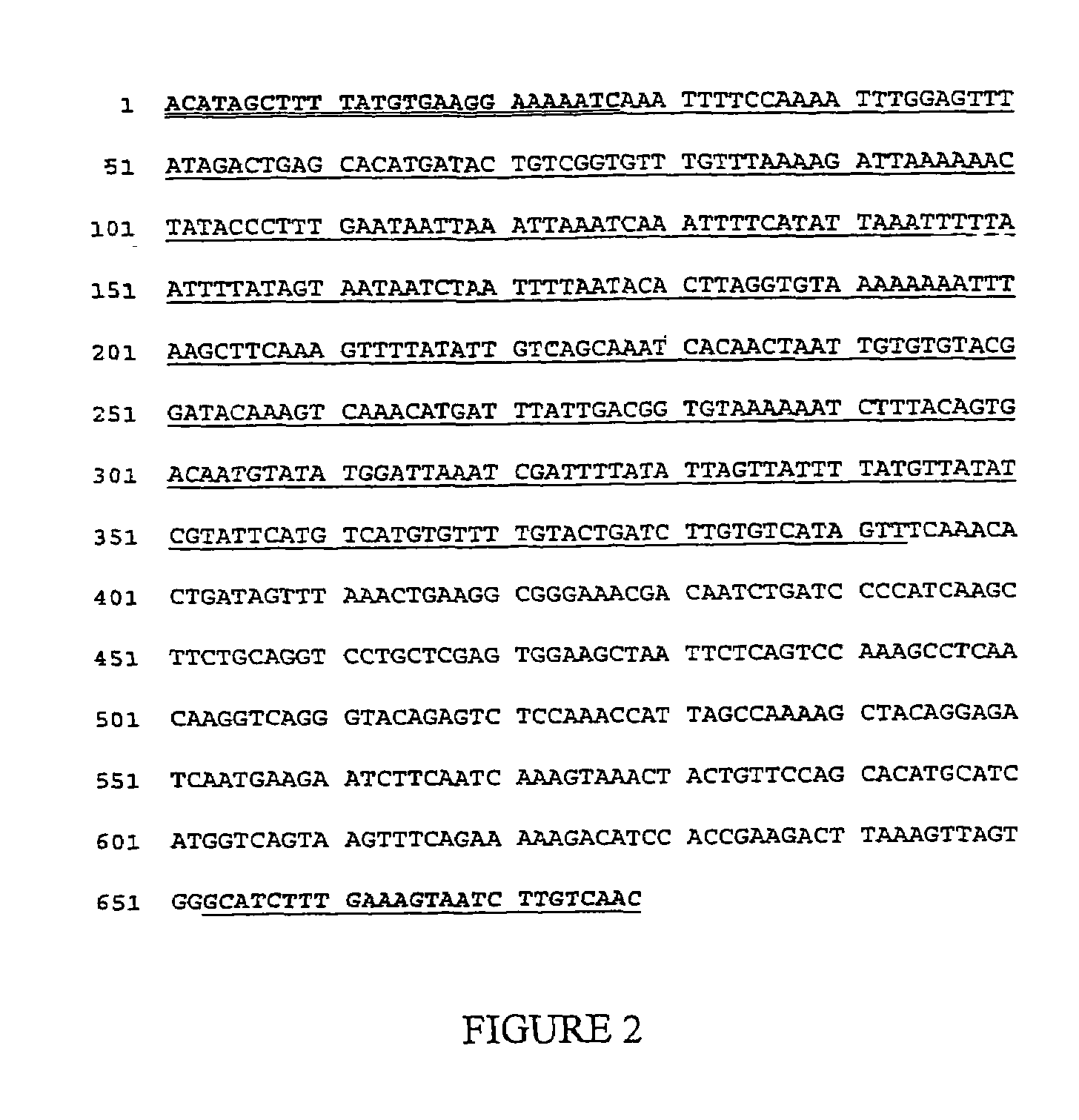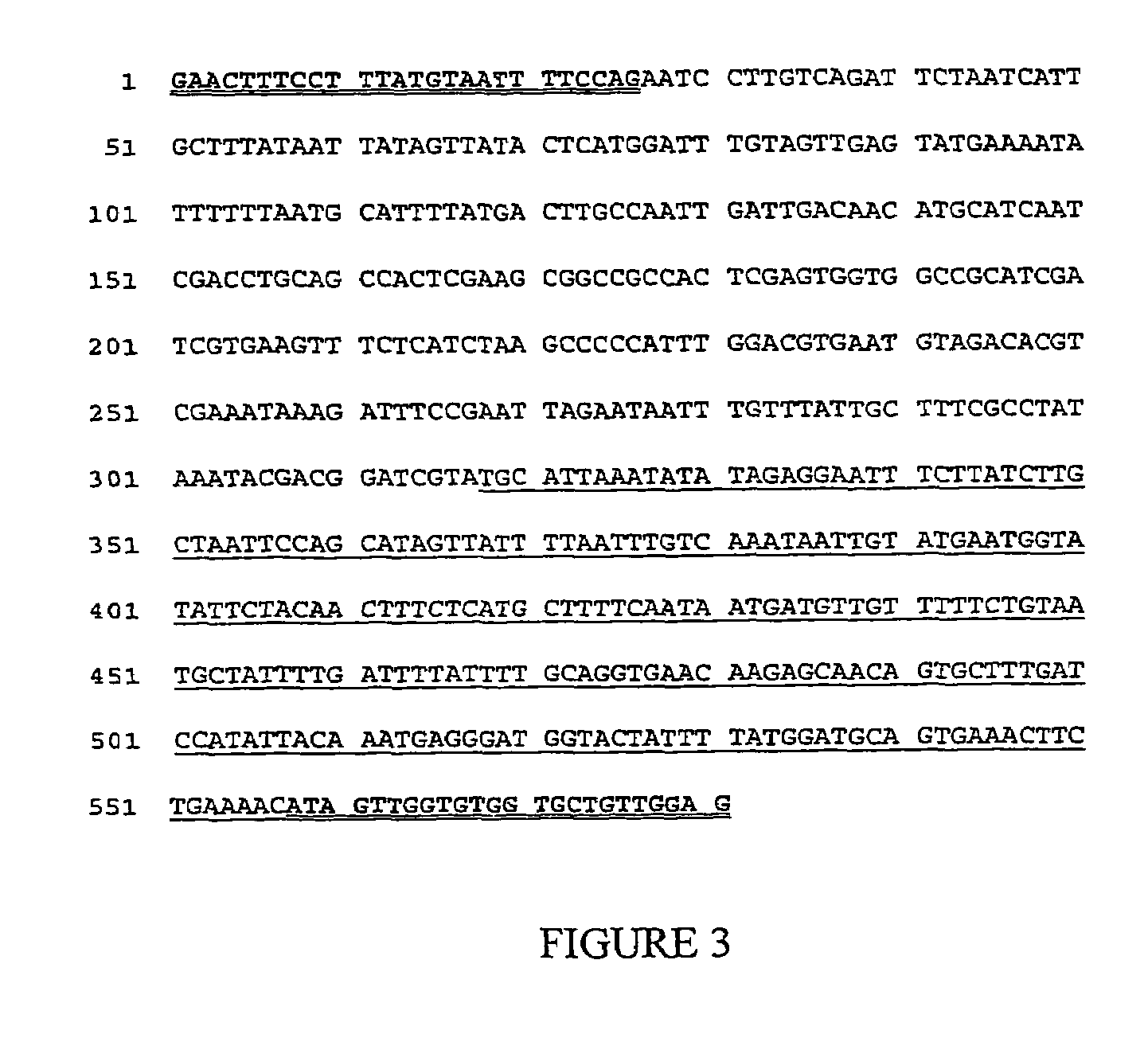Glyphosate tolerant alfalfa events and methods for detection
a technology of alfalfa and glyphosate, applied in the field of plant molecular biology, can solve the problems of serious weed problems in established stands, reduce yield and crop quality, and reduce quality
- Summary
- Abstract
- Description
- Claims
- Application Information
AI Technical Summary
Benefits of technology
Problems solved by technology
Method used
Image
Examples
example 1
[0066]DNA from transgenic alfalfa event J-101 or J-163 was extracted from alfalfa seeds. The DNA was isolated from the seed tissue using Qiagen's DNeasy Plant Miniprep Kit according to the manufacturer's instructions (Qiagen Corp. Valencia, Calif.). PCR of the genomic DNA sequences flanking the 5′ end of the T-DNA insertion in events J-101 or J-163 was performed using one primer designed to the genomic DNA sequences flanking the 5′ end of the transgene insert of each event (DNA primers A (SEQ ID NO:9), and E (SEQ ID NO:10), FIG. 1) paired with a second primer (DNA primer Z (SEQ ID NO:11), FIG. 1) located at the 5′ end of the insert in the duplicated FMV35S promoter (P-FMV35Sen, tandem duplication of the promoter from the Figwort mosaic virus, U.S. Pat. No. 6,018,100). PCR analysis of the genomic DNA sequences flanking the 3′ end of the T-DNA insertion in events J-101 or J-163 was performed using one primer designed to the genomic DNA sequences flanking the 3′ end of the insert of ea...
example 2
[0072]DNA sequencing of the PCR products provides for DNA that can be used to design additional DNA molecules as primers and probes for the identification of alfalfa J-101 or J-163. PCR products of the expected sizes representing the 5′ and 3′ transgene / genomic sequences were isolated by separation of the PCR products on a 2.0% agarose gel by electrophoresis. PCR products were isolated that are the 5′ and 3′ DNA regions that span the insert Junction between the transgene insertion into the alfalfa genome. The 5′ and 3′ PCR products for events J-101 and J-163 were purified by agarose gel electrophoresis followed by isolation from the agarose matrix using the QIAquick Gel Extraction Kit (catalog # 28704, Qiagen Inc., Valencia, Calif.). The purified PCR products were then sequenced with by DNA sequence analysis (ABI Prism™ 377, PE Biosystems, Foster City, Calif. and DNASTAR sequence analysis software, DNASTAR Inc., Madison, Wis.).
[0073]The DNA sequence was determined for a 678 nucleoti...
PUM
| Property | Measurement | Unit |
|---|---|---|
| temperature | aaaaa | aaaaa |
| temperature | aaaaa | aaaaa |
| temperature | aaaaa | aaaaa |
Abstract
Description
Claims
Application Information
 Login to View More
Login to View More - R&D
- Intellectual Property
- Life Sciences
- Materials
- Tech Scout
- Unparalleled Data Quality
- Higher Quality Content
- 60% Fewer Hallucinations
Browse by: Latest US Patents, China's latest patents, Technical Efficacy Thesaurus, Application Domain, Technology Topic, Popular Technical Reports.
© 2025 PatSnap. All rights reserved.Legal|Privacy policy|Modern Slavery Act Transparency Statement|Sitemap|About US| Contact US: help@patsnap.com



